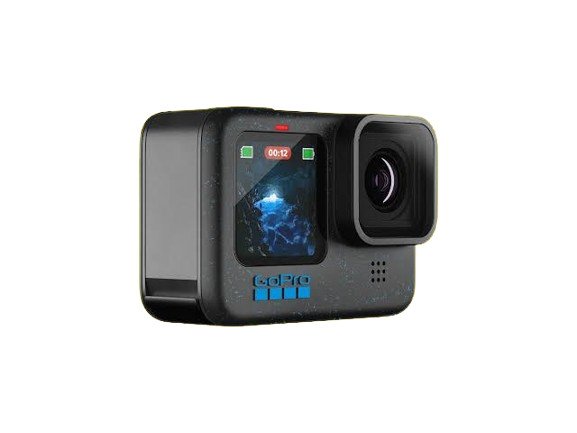A Comprehensive Guide to Digital Cameras
Remember the days when capturing a moment meant you have to carefully wind a roll of film into your camera, taking your shots, and then waiting impatiently for the film to develop? Ah, the nostalgia of film cameras! Those were the days when photography relied on film as the medium to record images. But as technology evolved, so did our cameras.
This blog post is a comprehensive guide that will walk you through the basics and advanced features of digital cameras, helping you make informed decisions and improve your photography skills.
What is a Digital Camera?
A digital camera is a device that captures photographs and videos in digital format. Unlike traditional film cameras that use photographic film to record images, digital cameras use electronic sensors to convert light into electronic data. This data is then stored on a memory card, allowing for easy viewing, editing, and sharing.
Digital cameras have revolutionized photography by offering convenience, versatility, and high-quality images. Unlike traditional film cameras, digital cameras use electronic sensors to capture images, which can be instantly viewed, edited, and shared. With a wide range of models available, from compact point-and-shoot cameras to sophisticated DSLRs and mirrorless systems, there’s a digital camera for every need and budget.
Types of Digital Cameras
Compact Cameras (Point-and-Shoot)

Compact cameras, also known as point-and-shoot cameras, are small, lightweight, and incredibly easy to use. They’re perfect for casual photography, travel, and everyday use. The biggest advantages are their portability and simplicity, making them great for beginners or anyone who wants a hassle-free shooting experience. However, they have limited manual controls and smaller sensors compared to other camera types.
Bridge Cameras

Bridge cameras serve as a middle ground between compact cameras and DSLRs. They are larger than compacts and come with fixed zoom lenses and more manual controls. These cameras are ideal for enthusiasts who want more versatility and better image quality than compacts offer. While they provide a greater zoom range and improved image quality, they are bulkier and still don’t quite match the image quality of DSLRs.
DSLR (Digital Single-Lens Reflex) Cameras

DSLRs are known for their interchangeable lenses, optical viewfinders, and large sensors. They are the go-to choice for professional photographers and serious enthusiasts. DSLRs offer excellent image quality, extensive manual controls, and a wide selection of lenses to choose from. However, they are bulkier, heavier, and often come with a higher price tag.
Mirrorless Cameras

Mirrorless cameras are similar to DSLRs in that they also have interchangeable lenses, but they use electronic viewfinders and are generally more compact. These cameras are favored by professionals and advanced enthusiasts, especially for travel photography, due to their compact and lightweight design. Mirrorless cameras offer high image quality and silent shooting, but their battery life is often shorter, and they may have fewer lens options compared to DSLRs.
Action Cameras

Action cameras, like the popular GoPro, are small, rugged, and often waterproof, making them perfect for capturing high-quality video and photos in extreme conditions. These cameras are designed to withstand harsh environments and are commonly used in sports, outdoor adventures, and underwater activities. The compact size and wide-angle lenses make them incredibly versatile, though they often lack the manual controls and larger sensors of more traditional cameras.
Underwater Cameras

Designed specifically for underwater photography, these cameras are waterproof and built to withstand the marine environment. Ideal for scuba diving, snorkeling, and marine exploration, underwater cameras often come with features tailored for shooting beneath the surface, like specialized lighting and white balance settings. They allow you to capture the beauty of the underwater world without needing additional housing, although their use is limited to specific environments, and they can be pricey.
Smartphone Cameras

Smartphone cameras have become incredibly advanced, making them a go-to for everyday photography. Integrated into the device you always have with you, smartphone cameras offer high-resolution sensors, multiple lenses, and sophisticated software features. They are perfect for capturing life’s moments and instantly sharing them on social media. The convenience and connectivity of smartphone cameras are unbeatable, though they generally have smaller sensors and fewer manual controls compared to dedicated cameras.
Instant Cameras

Instant cameras, like the ones made by Polaroid and Fujifilm Instax, bring a nostalgic touch to photography by printing photos immediately after you take them. These cameras are all about fun and instant gratification, providing tangible memories you can share on the spot. While they are great for novelty and instant photo sharing, keep in mind that the image quality is lower and the cost of film can add up over time.
Key Features to Consider
- Resolution: Resolution, measured in megapixels (MP), determines the amount of detail in your images. While higher resolution means more detail, most people will find that a camera with 12-24 MP is sufficient for their needs.
- Sensor size: The sensor size affects the camera’s ability to capture light, which in turn impacts image quality, especially in low-light conditions. Common sensor sizes include Full-frame, APS-C, and Micro Four Thirds, with larger sensors generally providing better image quality.
- Lens Options: If you choose a camera with interchangeable lenses, the range and quality of available lenses become crucial. DSLRs and mirrorless cameras offer a variety of lenses suited for different types of photography.
- Autofocus System: A fast and accurate autofocus system is essential for capturing sharp images, particularly for moving subjects. Different cameras offer varying autofocus capabilities, so it’s important to consider this feature based on your photography needs.
- ISO Range: The ISO range determines how well the camera performs in low-light conditions. A wider ISO range allows for better performance in different lighting situations, so look for a camera with a good ISO range.
- Video Capabilities: Many digital cameras now offer high-definition (HD) or 4K video recording. If videography is important to you, consider the camera’s video features and capabilities.
Tips for Choosing the Right Digital Camera
- Define Your Purpose: Before buying a camera, it’s crucial to understand what you need it for. Are you looking for something for casual use, travel, professional photography, or videography? Your purpose will guide your choice.
- Set a Budget: Digital cameras come in a wide price range. Determine how much you’re willing to spend, including accessories like lenses, memory cards, and tripods. Setting a budget helps narrow down your options and ensures you get the best value for your money.
- Research and Reviews: Reading reviews and watching video comparisons of the models you’re interested in can provide valuable insights into their real-world performance and reliability. User feedback can highlight potential issues and help you make an informed decision.
- Test Before You Buy: If possible, visit a camera store and try out different models. Pay attention to how the camera feels in your hand, the ease of use, and the responsiveness of the controls. Testing a camera in person can give you a better sense of whether it meets your needs and preferences.
- Consider Future Needs: Think about your future photography goals. Investing in a camera with more features than you currently need can save you from upgrading too soon. Consider how your needs might evolve and choose a camera that can grow with you.
Conclusion
Choosing the right digital camera involves understanding your needs, exploring different types and features, and making informed decisions based on research and testing. With the right camera in hand, you’ll be well-equipped to capture stunning images and create lasting memories. Whether you’re shooting for fun or for professional projects, the world of digital photography offers endless possibilities for creativity and expression. Feel free to reach out if you have any questions or need further guidance on your journey into digital photography!

